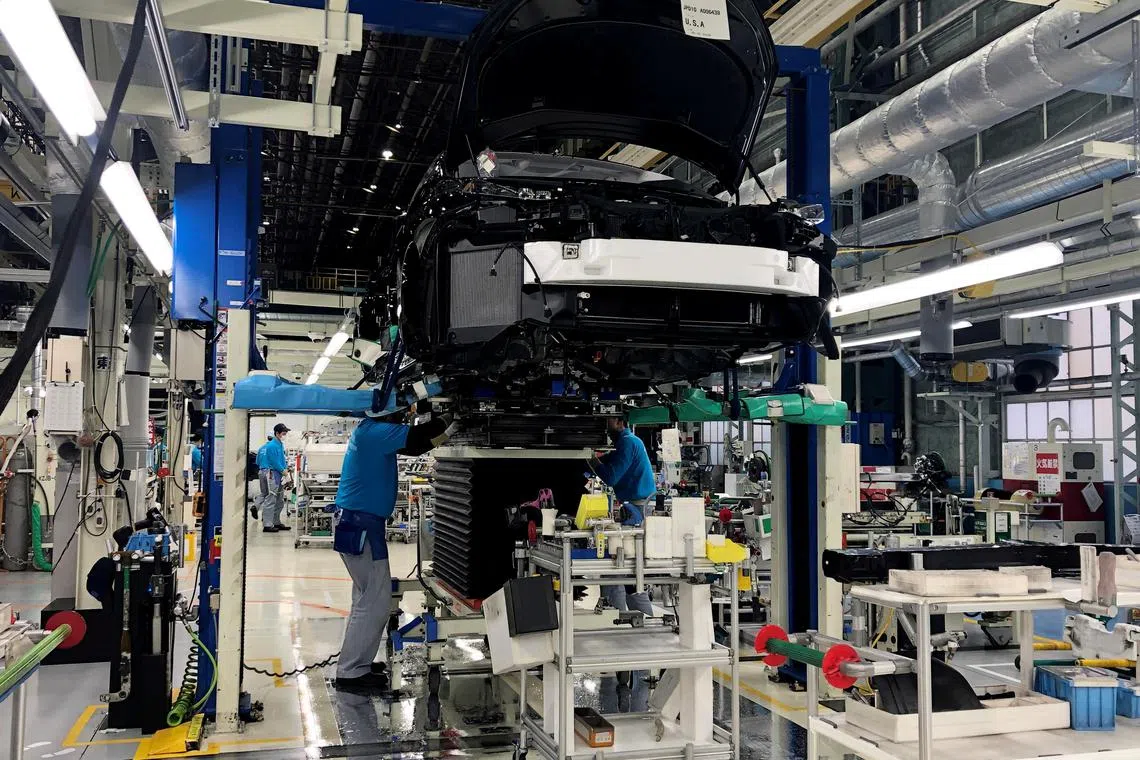Toyota cuts output target amid chip crunch as profit tumbles 25%
Sign up now: Get ST's newsletters delivered to your inbox

Toyota says it now expects to produce 9.2 million vehicles this fiscal year.
PHOTO: REUTERS
Follow topic:
TOKYO – Toyota Motor on Tuesday posted a worse-than-expected 25 per cent drop in quarterly profit and cut its annual output target, as the Japanese firm battled surging material costs and a persistent semiconductor shortage.
The world’s biggest automaker by sales also warned that it remained difficult to predict the future after posting its fourth consecutive quarterly profit decline, underlining the strength of the business headwinds it faces.
During the Covid-19 pandemic, Toyota fared better than most carmakers in managing supply chains, but it fell victim to the prolonged chip shortage this year, cutting monthly production targets repeatedly.
“The business environment is changing dramatically, such as the rapid changes of foreign exchange rates, rising interest rates, soaring materials prices, and more,” Toyota chief accounting officer Masahiro Yamamoto told analysts.
Operating profit for the three months ended September fell to 562.7 billion yen (S$5.36 billion), well short of an average estimate of 772.2 billion yen in a poll of 12 analysts by Refinitiv. A year earlier, Toyota sales reported a 749.9 billion yen profit.
Toyota said it now expected to produce 9.2 million vehicles this fiscal year, down from the previously forecast 9.7 million, but still ahead of last financial year’s production of 8.6 million units.
Reuters reported last month that Toyota had told several suppliers it was setting a global target for the current business year to 9.5 million vehicles and signalled that forecast could be lowered, depending on the supply of steel.
Toyota’s chief purchasing executive told analysts the global auto chip shortage continued due to a slow recovery of supply, as chipmakers battled natural disasters and Covid-19 lockdowns.
Still, the company stuck to its full-year operating forecast of 2.4 trillion yen for the fiscal year to March 31.
Toyota said last week its global production rebounded by 30 per cent in the quarter that ended in September, but warned that shortages of semiconductors and other components would continue to constrain output in the coming months.
It also warned last month that it would be unlikely to meet its 9.7 million vehicle production goal for this financial year, citing a scarcity of chips.
The yen has plunged around 30 per cent
The automaker is also under scrutiny from green investors and environmentalists over its slow push to producing fully electric vehicles (EVs).
Just a year into its US$38 billion (S$53.6 billion) EV plan, Toyota is already considering rebooting it to better compete in a market growing beyond its projections, Reuters reported last month. Reuters

